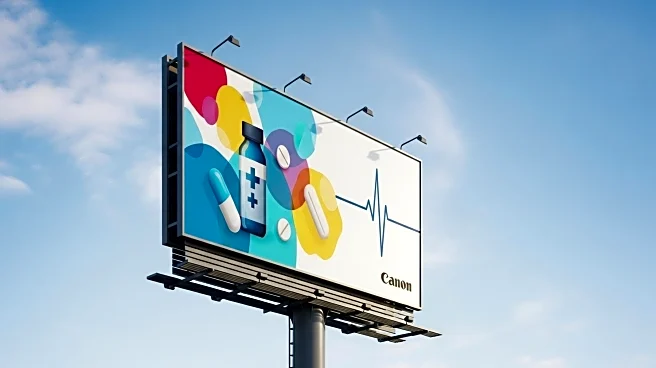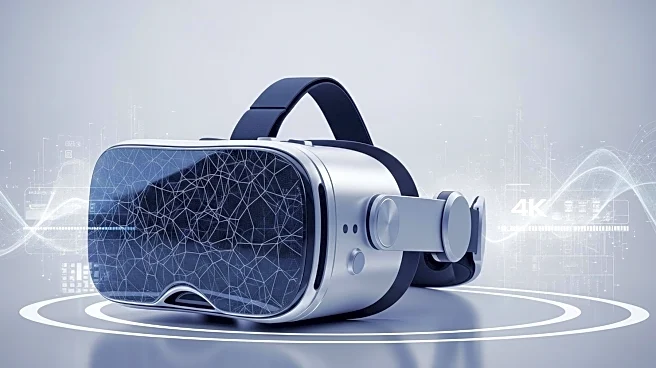What's Happening?
The pharmaceutical industry is facing increased federal scrutiny regarding its use of television and social media for advertising. As these platforms become crowded and disclosures are questioned, out-of-home (OOH) advertising is emerging as a viable alternative. OOH advertising, which includes dynamic screens in transit hubs, near urgent care centers, and inside pharmacies, offers a way for pharmaceutical brands to connect with consumers in real-world settings. This approach allows brands to deliver timely reminders, support, and education at moments when health decisions are made, thereby rebuilding credibility and restoring human connection.
Why It's Important?
The shift towards OOH advertising is significant for the pharmaceutical industry as it seeks to navigate regulatory pressures and maintain consumer trust. By leveraging OOH, pharmaceutical companies can engage with consumers in public spaces where health decisions are often made, such as near pharmacies and clinics. This method not only complies with regulations but also enhances the credibility of pharmaceutical brands by providing contextually relevant information. The ability to activate mobile engagement through quick scans or taps further extends the reach and impact of OOH advertising, potentially driving better health outcomes and consumer engagement.
What's Next?
As the pharmaceutical industry continues to adapt to regulatory changes, the role of OOH advertising is likely to expand. Brands may increasingly invest in dynamic and contextually relevant advertising strategies that align with consumer behavior and decision-making processes. This could lead to more innovative uses of technology in public spaces, enhancing the effectiveness of health-related messaging. Stakeholders, including healthcare providers and marketers, will need to collaborate to ensure that OOH advertising meets compliance standards while effectively engaging consumers.
Beyond the Headlines
The move towards OOH advertising highlights broader trends in marketing and consumer engagement. As digital platforms become saturated, industries may increasingly turn to real-world interactions to build trust and credibility. This shift could influence how other sectors approach advertising, emphasizing the importance of context and human connection in marketing strategies. Additionally, the integration of mobile technology with OOH advertising may pave the way for more interactive and personalized consumer experiences.










